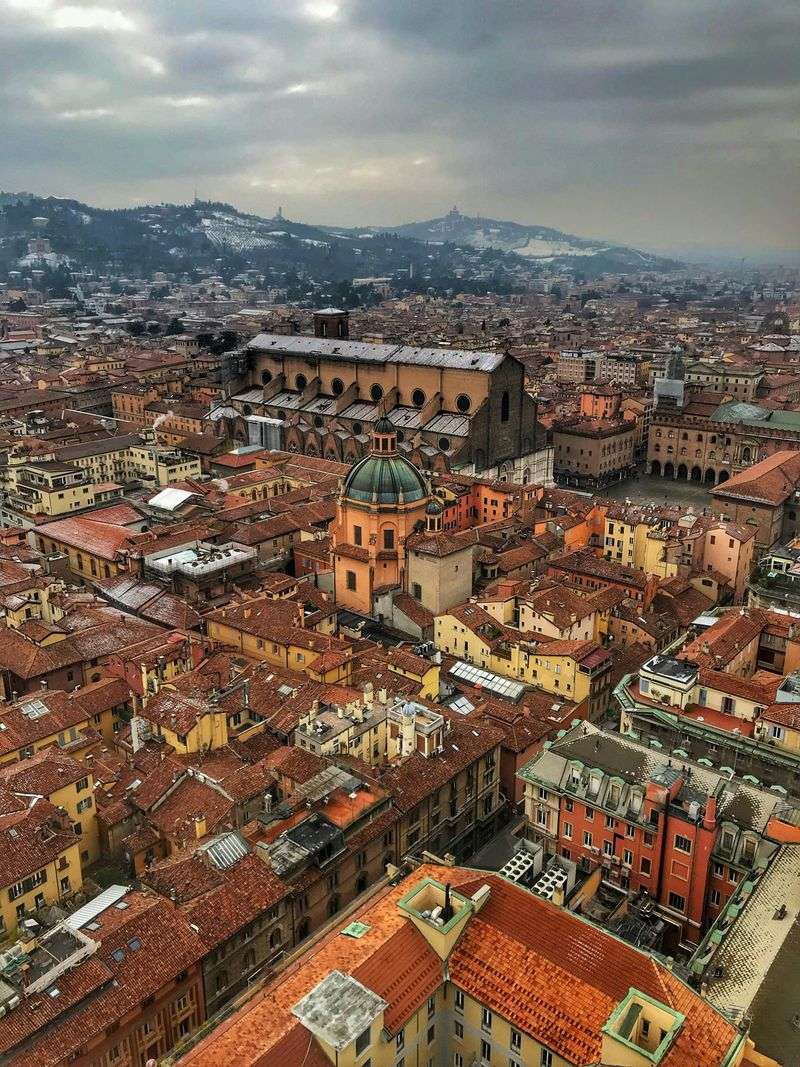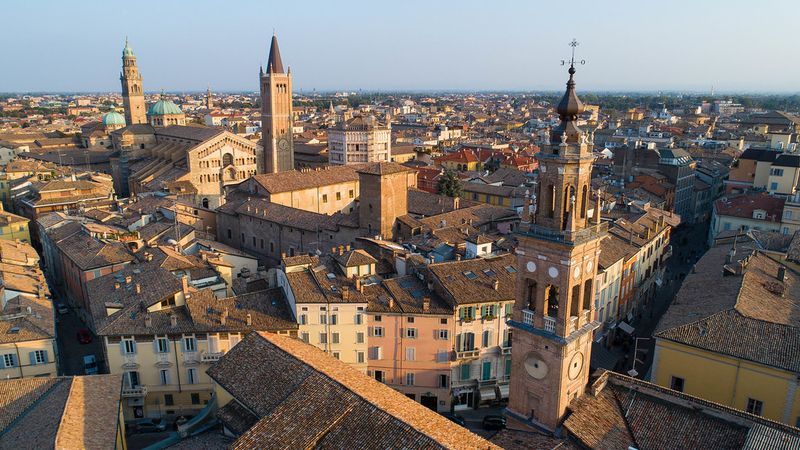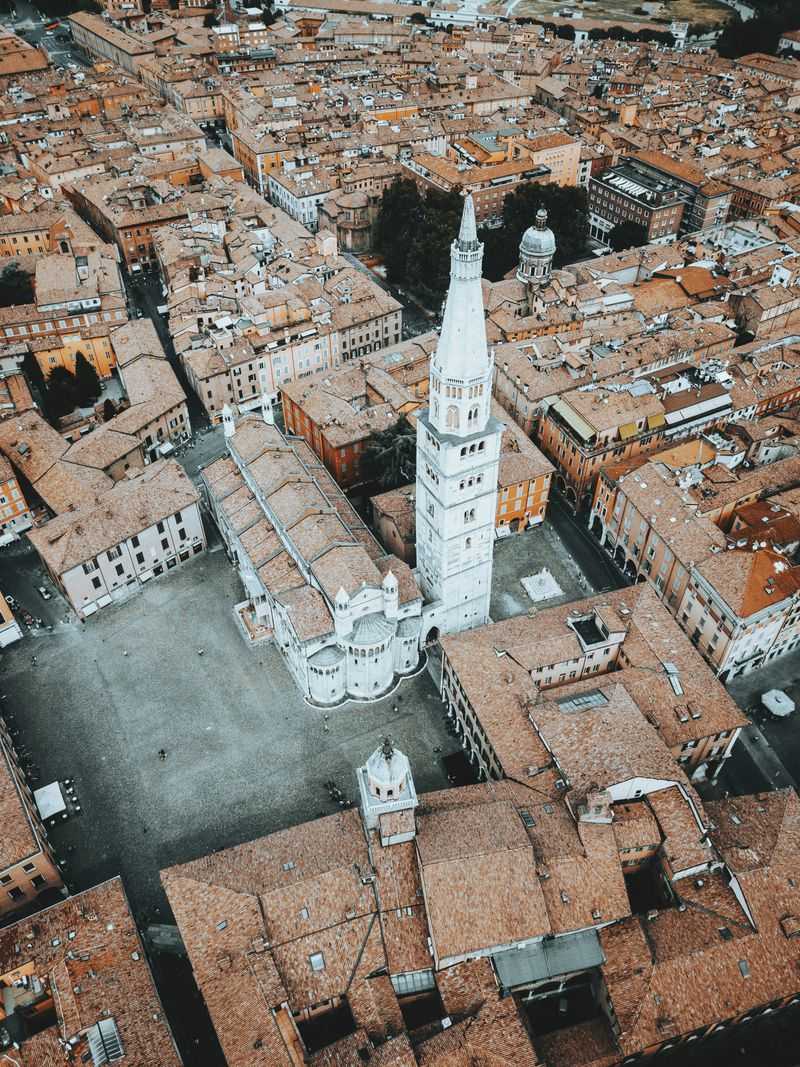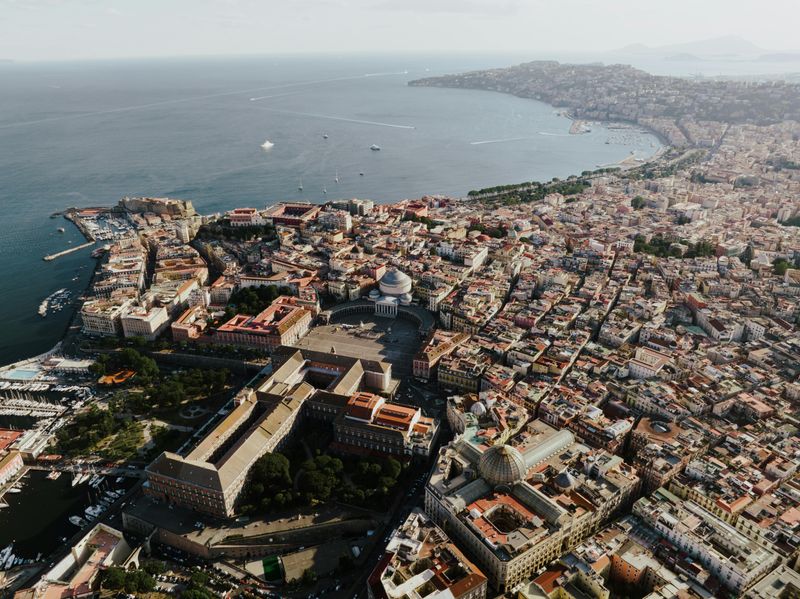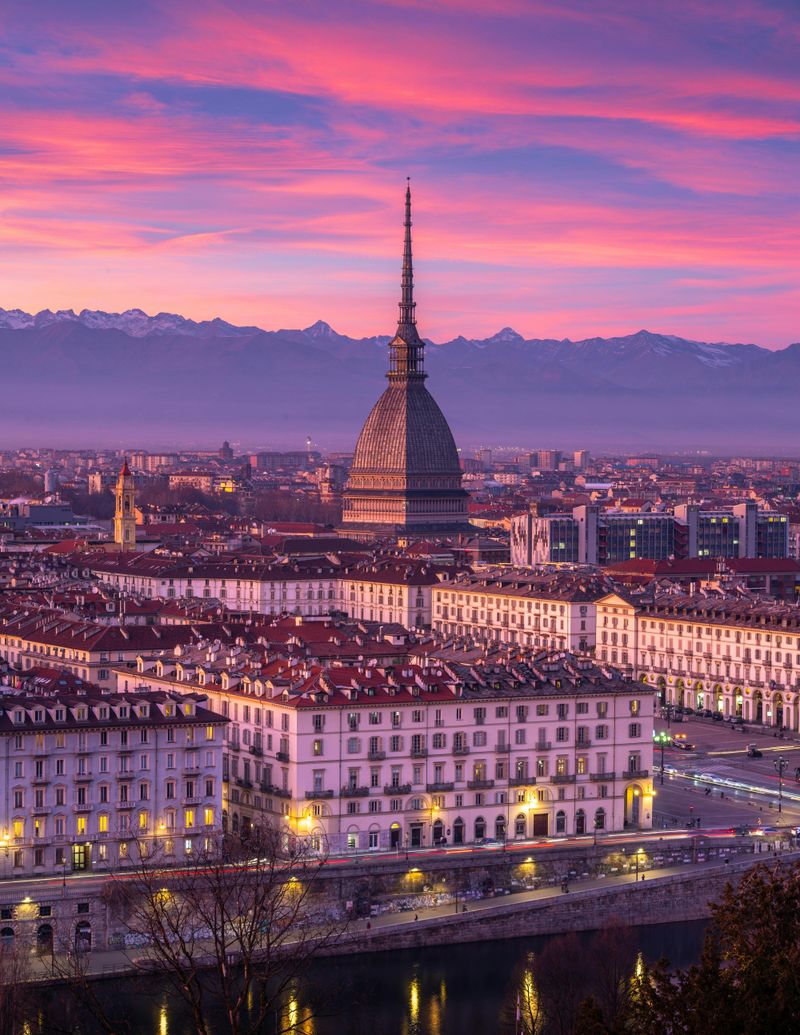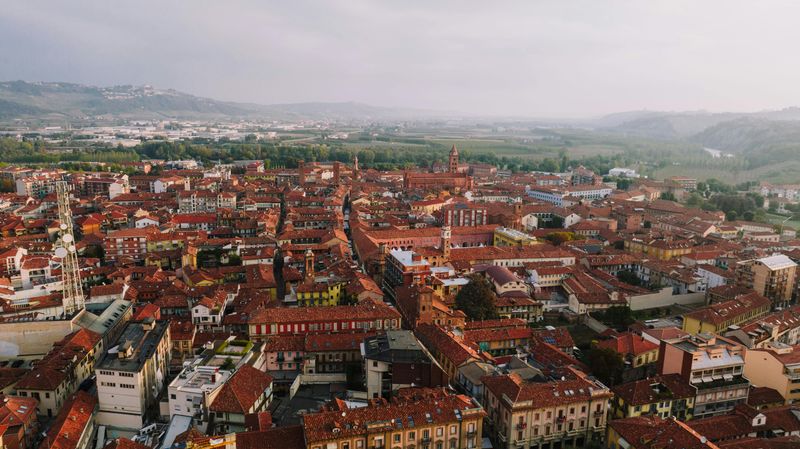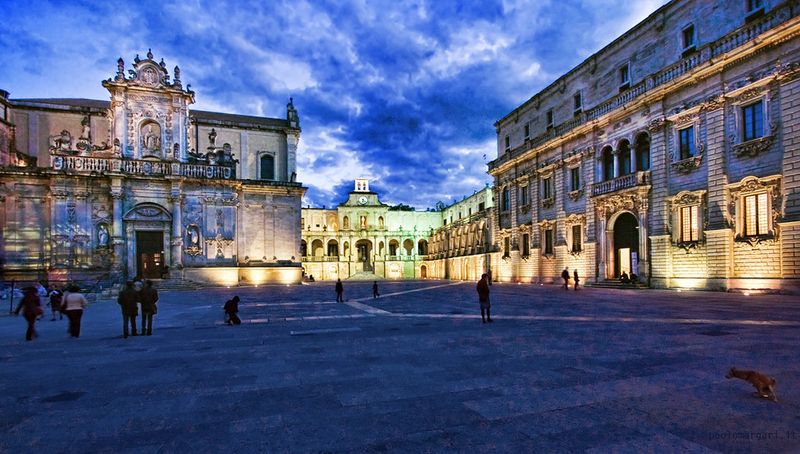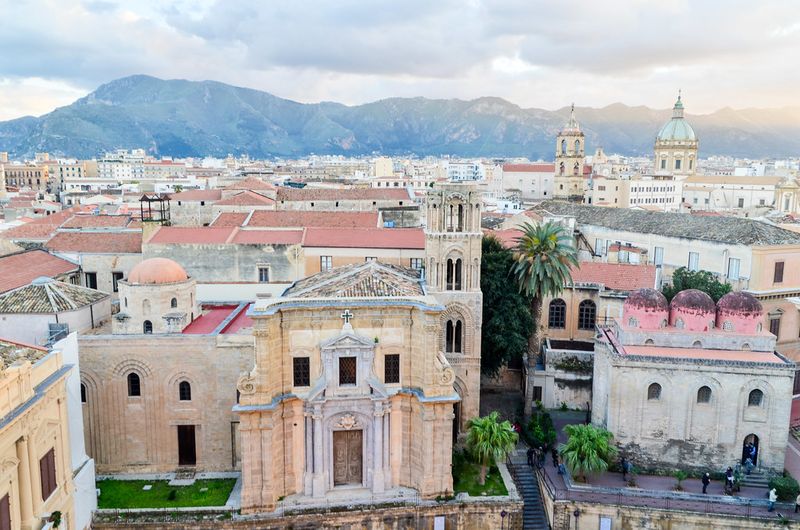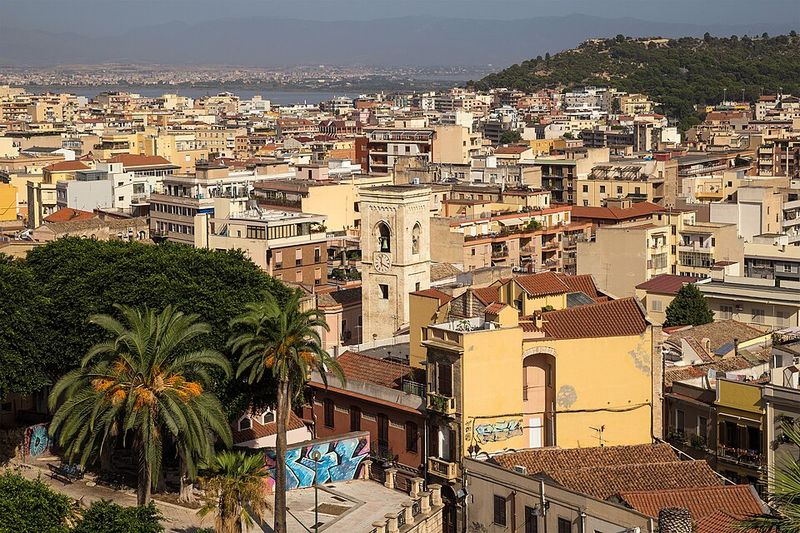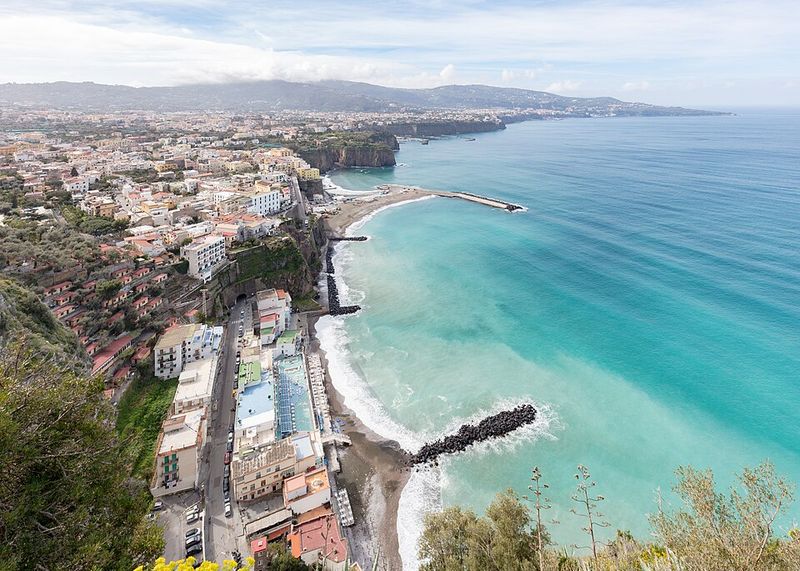Italy isn’t just about famous landmarks and beautiful scenery. It’s also a country where food tells stories, connects families, and brings communities together. From truffle-hunting villages to pizza capitals, each Italian town has its own special flavors and traditions waiting to be discovered. Whether you’re dreaming of fresh pasta in Bologna or biting into real Neapolitan pizza, these towns will fill your plate and your heart with unforgettable experiences.
1. Bologna – “La Grassa”, the Fat One
Walk through Bologna’s medieval streets and you’ll quickly understand why locals proudly call their city “La Grassa” or the Fat One. This nickname celebrates the city’s reputation for incredibly rich, indulgent dishes that have made it Italy’s unofficial culinary capital.
Tagliatelle al ragù is the star here, and it’s nothing like the thick spaghetti sauce you might know as bolognese. The real version features delicate egg pasta ribbons tossed with a slow-cooked meat sauce that’s been simmering for hours. Tortellini in brodo, tiny stuffed pasta swimming in golden broth, warms you from the inside out.
Head to the Quadrilatero market area where vendors have been selling cured meats, aged cheeses, and hand-rolled pasta for generations. Every corner offers another taste of Emilia-Romagna’s comfort food traditions.
2. Parma – Home of Parmigiano Reggiano & Prosciutto di Parma
Two ingredients have put Parma on the world food map, and you’ve probably sprinkled or sliced both of them at home. Parmigiano Reggiano cheese and Prosciutto di Parma ham aren’t just products here but badges of honor protected by strict EU regulations.
Both carry PDO status, meaning they can only be made in specific areas using traditional methods passed down through generations. Factory tours let you peek inside dairy rooms where massive cheese wheels age on endless wooden shelves, or watch paper-thin ham slices being hand-cut from legs that have cured for months.
Beyond these famous exports, Parma serves up tortelli d’erbetta, pillowy pasta pockets filled with ricotta and greens. Pair everything with shavings of nutty Parmigiano drizzled with aged balsamic, and you’ll taste why this region earned the nickname “Food Valley.”
3. Modena – Capital of Traditional Balsamic Vinegar
Forget everything you think you know about balsamic vinegar. In Modena, this dark, syrupy condiment reaches an art form that borders on obsession. Aceto Balsamico Tradizionale di Modena DOP isn’t something you casually splash on salad.
Made from cooked grape must and aged in wooden barrel batteries for at least 12 years, the real stuff tastes more like fine wine than supermarket dressing. Some barrels hold vinegar that’s been aging for 25 years or longer, developing complex flavors that are sweet, tangy, and impossibly smooth. Visiting historic acetaie gives you a behind-the-scenes look at these barrel-filled lofts where time does all the work.
While you’re exploring Modena’s food scene, don’t skip the tortellini, zampone sausage, or glasses of sparkling Lambrusco wine that locals pair with platters of cured meats.
4. Naples – Birthplace of Modern Pizza
Pizza lovers, consider Naples your holy land. This bustling southern city didn’t just perfect pizza but invented the modern version we all crave, especially the timeless pizza Margherita with its simple trio of tomato, mozzarella, and basil.
Neapolitan pizza has rules: soft, chewy crust with a puffy edge, minimal toppings, and a quick blast in a blazing-hot wood oven. Street food culture runs deep here, too. You’ll spot tiny windows selling pizza a portafoglio, folded like a wallet so you can eat it while walking. Fried pizza offers a crunchy, indulgent twist.
Beyond pizza, Naples tempts you with sfogliatella pastries that shatter into a thousand flaky layers and paper cones filled with fried seafood straight from the harbor. Every bite connects you to centuries of tradition.
5. Rome – Pasta Heaven
Rome’s food identity rests on four legendary pasta dishes that turn simple ingredients into pure magic. Cacio e pepe, carbonara, amatriciana, and gricia might sound fancy, but they’re really just smart combinations of pasta, Pecorino Romano cheese, guanciale, black pepper, eggs, and sometimes tomato.
Each dish follows the Roman philosophy that great cooking doesn’t need complicated recipes or long ingredient lists. What matters is quality and technique. A proper cacio e pepe uses starchy pasta water to create a silky, peppery sauce that clings to every strand. Carbonara should never have cream, just eggs and cheese whisked into hot pasta.
Between meals, grab supplì, fried rice balls oozing with melted cheese, or try artichokes prepared alla romana or alla giudia. Roman trattorias keep these traditions alive in every neighborhood.
6. Florence – Bistecca & Gelato
Meat lovers worship Florence for one unforgettable reason: bistecca alla Fiorentina. This massive T-bone steak comes from Tuscan Chianina cattle and arrives at your table grilled over wood coals, seasoned with nothing but salt, and cooked rare. It’s thick, juicy, and meant for sharing, though you might not want to.
Florence doesn’t stop at steak. The city also serves up ribollita, a hearty bread and vegetable soup that tastes like Tuscan countryside in a bowl. Adventurous eaters should try lampredotto sandwiches, made from cow stomach simmered until tender and served in a crusty roll.
After dinner, join locals on a nightly gelato crawl. Florence’s artisan gelaterias craft small-batch flavors that make every scoop feel like a celebration. Sweet or savory, this city feeds both sides of your appetite perfectly.
7. Turin – Chocolate & Coffee Capital
Turin wears the crown as Italy’s chocolate capital, and one bite of gianduja will tell you why. This smooth hazelnut-chocolate blend was born here in the 1800s and still fills elegant pralines sold in historic shops throughout the city.
Pair your chocolate with bicerin, a layered drink that combines espresso, rich chocolate, and cream in a small glass. Sipping one in a centuries-old café, surrounded by velvet chairs and gilded mirrors, feels like stepping into another era. Turin’s café culture runs deep, with locals treating coffee breaks as sacred daily rituals.
Beyond sweets, Piedmont’s location gives Turin access to world-class wines and rich regional dishes like agnolotti del plin, tiny stuffed pasta pinched by hand, and vitello tonnato, cold veal draped in creamy tuna sauce. Sweet-toothed travelers find paradise here.
8. Genoa – Pesto & Focaccia by the Sea
Genoa gave the world pesto, and tasting it here feels completely different from anything you’ve had before. Pesto alla Genovese starts with tiny-leaved Ligurian basil pounded in a marble mortar with pine nuts, garlic, Parmigiano, pecorino, and olive oil until it becomes a bright green paste that tastes like summer.
Locals toss pesto with trofie, short twisted pasta that catches every bit of sauce, or spread it on focaccia genovese, the city’s famous flatbread that’s crispy outside and soft inside. Speaking of focaccia, Genoese people actually dip it in cappuccino for breakfast, and yes, it’s absolutely delicious.
This port city’s location means seafood plays a big role too. Grab fried seafood cones at the harbor and watch boats bob in the Mediterranean while you eat.
9. Alba – White Truffles & World-Class Wine
Nestled in Piedmont’s rolling Langhe hills, Alba has built its reputation on something you can’t see until it’s unearthed: white truffles. These knobby, aromatic treasures grow underground and cost more per ounce than gold during peak season.
Every autumn, Alba hosts a famous truffle fair where hunters bring their best finds and restaurants create special menus showcasing shaved truffle over everything from tajarin pasta to scrambled eggs. The earthy, garlicky aroma is impossible to describe but unforgettable once you’ve experienced it. Trained dogs sniff out truffles hidden beneath oak and hazelnut trees.
Alba’s food scene extends beyond truffles to include world-renowned wines like Barolo and Barbaresco, both made from Nebbiolo grapes grown on nearby hillsides. Add hazelnut desserts to the mix, and you’ve got a foodie destination worth planning your entire trip around.
10. San Miniato – A Tiny Tuscan Truffle Hub
Between Florence and Pisa sits San Miniato, a medieval hilltop town that punches way above its weight in the truffle world. While smaller than Alba, this Tuscan gem produces exceptional white truffles that draw serious food lovers every autumn.
The annual truffle festival transforms the town into a celebration of all things funghi, with market stalls overflowing with fresh truffles, tastings at every turn, and guided tours into the surrounding hills where truffle hunters work with their dogs. Local restaurants go all-in during truffle season, building entire menus around simple preparations that let the truffle shine.
Picture tagliolini pasta with nothing but butter and generous shavings of white truffle, or perfectly cooked eggs topped with truffle slices. Small wine bars offer Tuscan wines that complement the earthy flavors beautifully.
11. Lecce – Puglia’s “Cucina Povera” Star
Down in southern Puglia, Lecce serves as your gateway to cucina povera, the “poor kitchen” style of cooking that makes vegetables, legumes, and grains taste like royalty. This isn’t fancy food, but it’s deeply satisfying and packed with flavor.
Ciceri e tria combines boiled and fried pasta with chickpeas in a dish that’s both crunchy and creamy. Fave e cicorie pairs pureed fava beans with sautéed chicory greens, bitter and earthy in the best way. Orecchiette, the little ear-shaped pasta Puglia is famous for, shows up tossed with cime di rapa, a slightly bitter green that locals adore.
Save room for pasticciotto leccese, a warm custard-filled pastry that’s perfect alongside your morning espresso. Lecce proves that simple ingredients, treated with respect and tradition, create meals you’ll remember forever.
12. Palermo – Sicily’s Street-Food Powerhouse
Palermo’s streets pulse with food energy unlike anywhere else in Italy. Sicily’s capital has perfected the art of eating on the go, with vendors selling crispy, golden specialties from tiny windows and market stalls that have been family-run for generations.
Arancini (or arancine, depending on who you ask) are rice balls stuffed with ragù, peas, and cheese, then fried until the outside shatters when you bite it. Panelle, thin chickpea fritters, get tucked into soft rolls for a simple but addictive sandwich. Sfincione is Palermo’s answer to pizza: thick, spongy dough topped with tomato, onions, and breadcrumbs instead of cheese.
Adventurous eaters can try pane con la milza, a spleen sandwich that’s a local tradition. Finish with a cannoli, its crispy shell filled with sweet ricotta cream, and you’ll understand why Palermo’s street food is legendary.
13. Cagliari – Sardinian Seafood & Bottarga
Cagliari, Sardinia’s capital, sits where mountain traditions meet Mediterranean waters, creating a food culture that’s uniquely its own. Seafood dominates menus here, especially dishes featuring bottarga, the island’s prized ingredient made from salted, cured fish roe.
Spaghetti alla bottarga is deceptively simple: pasta tossed with olive oil, garlic, and generous gratings of bottarga that add a powerful, briny punch. One bite transports you straight to the sea. Fregula, Sardinia’s pearl-like pasta, pairs beautifully with clams in a light, flavorful broth.
Malloreddus, small ridged pasta shells, show up in countless variations. When you need a break from seafood, order porceddu, roasted suckling pig that’s crispy outside and tender inside. Cagliari’s mix of land and sea flavors gives you the full Sardinian experience on one plate.
14. Matera – Ancient Caves & Legendary Bread
Matera’s famous cave dwellings, the Sassi, draw visitors from around the world, but the town’s food traditions run just as deep into history. Basilicata’s agricultural heritage shapes every meal here, with dishes built around local grains, pulses, and vegetables grown in the surrounding countryside.
Pane di Matera is the undisputed star, an ancient bread with a distinctive shape that’s been baked here for centuries using durum wheat flour and natural yeast. The crust crackles when you break it, revealing a golden interior that stays fresh for days. This bread isn’t just food but a symbol of Matera’s resilience and identity.
Pair your bread with orecchiette pasta dishes, hearty chickpea and lentil stews that warm you from the inside, and glasses of Aglianico del Vulture, the region’s bold red wine. Rustic never tasted so good.
15. Sorrento – Lemons, Limoncello & Coastal Flavors
Perched on cliffs above the Bay of Naples, Sorrento wraps you in the scent of lemons before you even step off the bus. Sorrento IGP lemons are huge, fragrant, and thick-skinned, perfect for making limoncello, the sweet lemon liqueur that’s become this coast’s liquid sunshine.
Food guides call Sorrento a food lover’s paradise, and they’re not exaggerating. Gnocchi alla Sorrentina bakes pillowy potato dumplings in tomato sauce with melted mozzarella until everything bubbles and browns. Seafood risottos showcase the day’s catch, creamy and rich with the taste of the Mediterranean. Lemon-based desserts like delizia al limone offer sweet, tangy bites of heaven.
Down in Marina Grande, grab a cuoppo, a paper cone filled with fried fish and seafood, and eat it while watching fishing boats return with the sunset painting everything gold.

